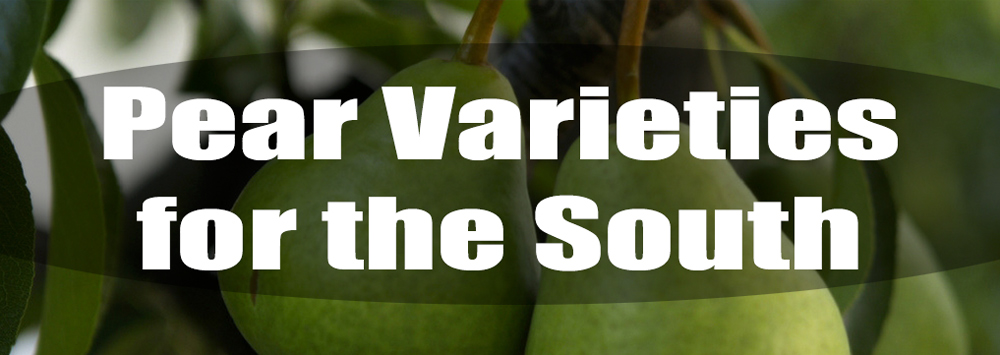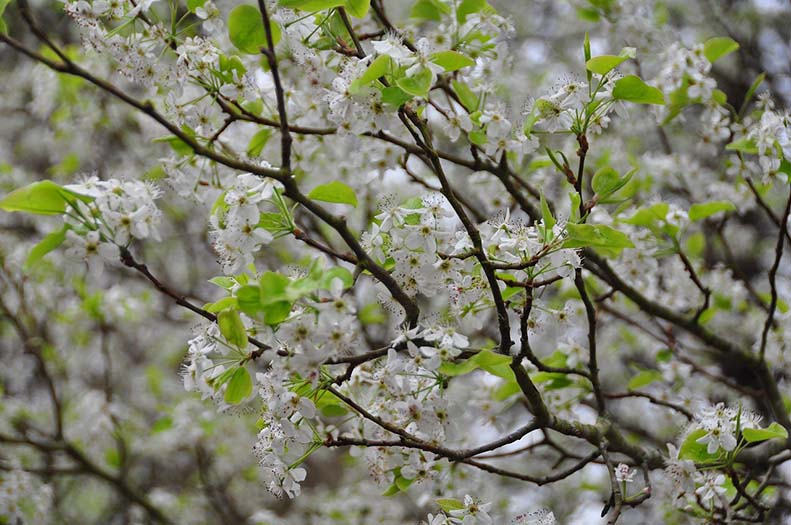
Pears are thought of as a cold-climate fruit, yet they are more adaptable than you might think. One of the benefits of being a garden writer is the many comments and ideas I get from readers. Today we’ll focus on pear varieties, thanks to some insight from gardeners in the south.
These originally appeared on a survival plant post on pears I created here.
Erik writes:
“Supposedly the ‘Chinese white pear’ (Bai li) cultivars Tsu Li (which is really ancient and supposedly good but quite slow to bear) and Ya Li (which need to be planted together, as they bloom earlier than even the pyrifolia Asians [‘apple pears’]) will both fruit with only 450 chill hours and are fireblight resistant.
I have had grocery Ya Li and am not impressed–crisp, watery, no flavor (that is also my opinion of most of the larger, pyrifolia types which someone must like because they are more expensive than aromatic, buttery European pears that taste like pears).
However, I found a delicious way to treat firm Boscs that also works with low flavor sand/oriental pears and Ya Li: Poach them in flavored syrup. The bland ones actually keep their shape better than good European types (turn a Seckel glut into pear butter instead). The flavor comes from the syrup rather than the pear, but hey, it works. (The French mostly use sweetened wine, but even stale coffee. In [Polish] Chicago, I can get blackcurrant juice or syrup and mostly use that. Vanilla and ginger blend nicely with most pears, even the aromatic ones that are mostly high chill and killed by fireblight.)
‘Warren’ is often recommended as a moderately low chill (NW FL and north), fireblight-resistant European sort similar to Bartlett, but I don’t have personal experience with it. Poached pears with vanilla ice cream may not be an option if the something hits the fan, but is nice in nicer times.”
And Carl responds:
“I have a lot of pear trees in Northwest Florida that are mostly grafted over pears I purchased in box stores or in flea markets. I pick varieties that were either developed in the deep south by normal people or were found after many years to do quite well.
Best fresh-eating pears and fire-blight-resistant so far for me are: Southern Bartlett (from Abbreville, LA), Golden Boy from Just Fruits and Exotics, and the Asian pear Olton Broussard from an old shipment to a nursery labeled ‘Oriental Pear.’ Kieffers and Orient pears for cooking/salads and for pollinating the Olton Broussards.
There are many new pears that I am trying out at the moment that are said to be very good. But the three I mentioned are about as sure of a thing as there can be in the South. The Olton Broussard may not fruit in zone 9 or during extremely warm winters in zone 8b.
The Hood is another good but early pear that is disease resistant and very low chill. It was university-developed unlike the other eating pears that I mentioned. See http://tandeecal.com/page10.htm — My Southern Pear interest group.”
Pear Varieties for the South
There are some nice field reports on pear varieties for the South at the link Carl provided. I recommend checking them out.
For North Florida (which also coincides with Southern Georgia, Alabama, Louisiana, portions of Texas, and other subtropical areas), the University of Florida recommends:
- Ayer
- Baldwin
- Kieffer
- Flordahome
- Orient
- Hood
- Pineapple
- Tenn
The range of those pears probably goes a good bit farther north. For south of Gainesville, the only three pears recommended are:
- Flordahome
- Orient
- Pineapple
Le Conte grows in the deep south and is apparently an excellent pear; however, it’s not as disease resistant as some varieties.
When I visited the Orange County extension office in Orlando to film my video on fruit trees for Florida, I noticed that the “Pineapple” pear was the only tree that was thriving. However, the trees were planted in a hot field.
I believe they would have done much better in a mulch-rich environment with a variety of other species, food-forest style.
Here’s that video:
In my North Florida food forest, I grew Flordahome, Pineapple, Hood, Kieffer, Baldwin, and other recommended pear varieties for the South, plus grafted branches onto some of them from an old productive pear tree of unknown variety growing in Gainesville.
People often don’t realize how far south you can grow pears.
It is good to see people having success. Don’t overlook pear trees — try some on your homestead!
Imagine homemade pear pie, pear sauce, canned pears, pear salsa … eating them fresh and sun-warmed from the tree. I never knew how good pears really were until I grew my own trees. Store-bought pears are a pale imitation of ripe fruit from the tree.
*Pear image courtesy Dave Minogue. CC license.
(This article was originally published on January 26, 2018.)
David The Good is a Grow Network Change Maker, a gardening expert, and the author of five books you can find on Amazon: Compost Everything: The Good Guide to Extreme Composting, Grow or Die: The Good Guide to Survival Gardening, Totally Crazy Easy Florida Gardening, Create Your Own Florida Food Forest, and Push the Zone: The Good Guide to Growing Tropical Plants Beyond the Tropics. Find fresh gardening inspiration at his website TheSurvivalGardener.com and be sure to follow his popular YouTube channel.









COMMENTS(1)
I have a seven year old Orient and a 3 year old Pineapple. The Orient has bloomed once a few years ago and the Pineapple has not yet bloomed. I’d this normal?